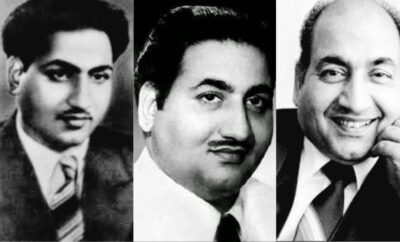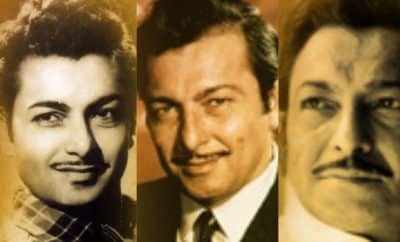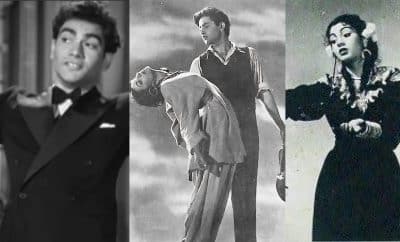Song Sketch
Mere Man Ke Diye – Parakh – The Lamp Must Keep Burning
Jahaan rahega wahin raushni lutaayega,
Kisi charaagh ka apna makaan nahin hota…
A lamp keeps on dispensing light, wherever it is placed. It doesn’t need any destination of its own. It must keep burning to give light. Would burning not be hurting the lamp? It would be, certainly! But there won’t be any light unless someone burns. If burning is your destiny, why not be a lamp in someone’s dark path? This is as idealistic as it may sound, and you have to be either a saint or Seema (Sadhana) from the satirical Bimal Roy classic Parakh (1960), a beautiful and pure-hearted girl from a broke but god-fearing, value-driven and self-esteemed family living hand to mouth in a village.
Seema has been living as happily as she could amidst the poverty, facing all the problems with an ever-smiling face. She has recently found some solace in Rajat’s (Basanta Choudhury) love for her. But her solace is only short lived, as she ends up quarrelling with him over his increasing interaction with another girl; and they are soon forced to walk away from each other’s lives by the respective families, afraid of sadistic social norms and the superficial prestige. In order to help her father get rid of his huge debt, Seema finally agrees to marry an old rich man.
Seema is shattered! While her mind is already filled with darkness, the surroundings too start getting dusky as the sun sets, and she starts lighting the lamp beside a small shrine in the house, followed by the other lamps in the house – Bimal Roy’s brilliant depiction of basic human instinct – may what come, the life must go on!
The shrine and the house are lit, but what about her mind? She herself has to light a lamp within too! She starts convincing herself through Lata Mangeshkar’s pathos-laden crooning in the background –
Mere man ke diye, mere man ke diye,
Yun hi ghut ghut ke jal tu mere laadle, o mere laadle …
O my dear heart! Light the lamp within and let it burn continuously, albeit in the suffocation!
Seema starts waking around the swarthy house with a lamp in her hands shedding light only on her sad face, as though she is saying to herself, “Aatmadeepo bhawa” (be your own light)!
Khaak ho jaayen hum pyaar ke naam par,
Pyaar ki raah mein raushni to rahe…
I will be reduced to ashes by the blaze of the heartbreak. Be that as it may! My burning will at least light the path of love. If the end is inevitable, wouldn’t doing good to others before the life ends be fulfilling?
Aag ke phool aanchal mein daale huwe
Kab se jalta hai wo aasmaan dekh le…
The sky has been carrying the fiery flowers of the sun and the moon and the stars since ages. It doesn’t stop lighting others’ darkness because the fire hurts. Light others’ lives just like the sky!
Sadhana’s emotive face expresses every word of the song, even if she doesn’t lip synch. Bimal Roy’s symbolic direction speaks a thousand words more than those in the lyrics.
This brief but outstanding composition by the musical wizard Salil Chowdhury has somewhat been overshadowed by the popularity by the other two Lata solos from the film – the unparalleled classic “O sajna, barkha bahaar aayi” and the frolicky and gleeful number “Mila hai kisi ka jhumka”. Brilliant orchestral landscape comprising very few elements such as the choir, piccolo and subtle notes of piano only enhances the soulfulness of the composition.
Lata Mangeshkar’s melancholic rendition is as proficient and prolific as her sweet and joyous rendition in the other two songs. She has managed to carry the poignancy in the song end to end by skilfully crooning the song with astounding control.
Just so many as six lines written by the lyricist Shailendra, at the first glance appearing to express the heartbroken Seema’s feelings, have a hidden philosophical message in them – if you are burning, light the lives of others! Helping others when your end is in vision will take your life, howsoever little it remains, several notches up. Shailendra, aptly known as Kaviraaj, was anyway the master of conveying deep philosophy in simple words, just like our ancient saints.
The song, apart from being a musical masterpiece, is in fact an enlightenment in the disguise of lamenting!



